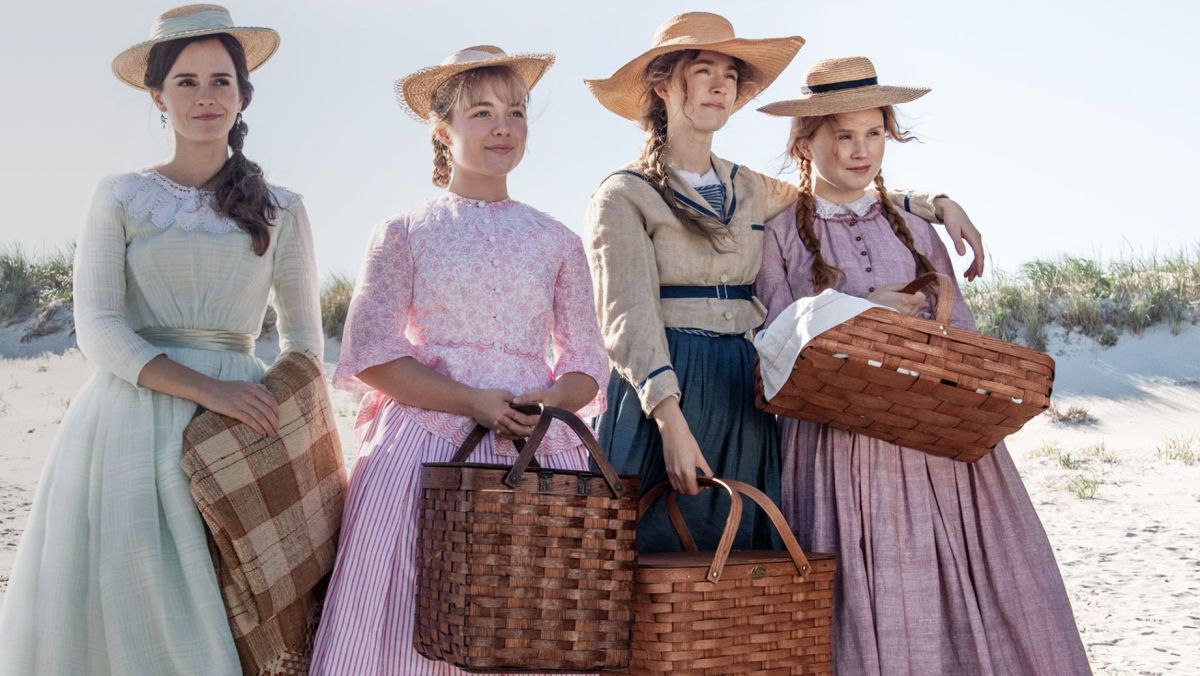These Olde Timey Photos of the Little Women Cast Are Stunning
Photographer Wilson Webb used tin type photography to capture the era of the film.

The team behind Greta Gerwig’s Little Women has released a series of photographs of the cast taken via tin type photography. The resulting images are beautifully evocative of the era during which Louisa May Alcott’s classic takes place.
“The actors were very accommodating and enjoyed seeing the process of making each image. I explained what I was doing and they could see the image fade up from black as it developed. Emma was especially intrigued and said she wanted a wet-plate studio in her house.” – @WilsonWebb pic.twitter.com/3mRggL6m8t
— Little Women (@LittleWomen) February 5, 2020
This type of photography, called the collodion process but also known as wet plate or tintype, is said to have been invented in 1851 by Frederick Scott Archer and Gustave Le Gray. The process involves capturing a negative image on a glass pane that was treated to chemicals before being exposed to light. The plate was then placed in a chemical bath which fixed the image, then varnished and sealed with an open flame.
The collodion process was very popular despite its difficulty of use, as the process had to be completed within a set period of time to capture and retain the image.
Photographer Wilson Webb used an intrepid 8×10 view camera and custom made a lens mount in order to attach a 29mm F3 brass petzval lens made in London by J.H. Dallmeyer in 1881. You can watch the entire process in the @LittleWomen Instagram Stories.
Webb shot the images on set, with actors coming by between breaks in filming to sit for their portraits. Webb worked with production Designer Jess Gonchor to capture each character’s personality via their costuming and background props, like Jo (Saoirse Ronan) posed with paper and a desk.
Warm colors appear dark, cool colors light, so much care has to be taken about what colors are in clothing and in backdrops.
📷: @WilsonWebb pic.twitter.com/b6HRRfSNnL
— Little Women (@LittleWomen) February 5, 2020
Webb said of the process, “The actors had to sit very still, not because the exposure took a long time but because the amount of image that was in focus is less than 1 inch deep. It takes 10-20 seconds, after focusing, to set up the plate to be exposed so if someone moved slightly the photo would be out of focus.”
Each image is one of the kind, and they cannot be replicated. And even though we’ve left physical film behind for digital (never mind glass plates and such) it’s a fascinating look at the history of photography and the labor it once involved to capture an image.
Dive deeper behind-the-scenes with Photographer @WilsonWebb in our Instagram Stories!https://t.co/qZb0r6ycIg pic.twitter.com/YKp14XG37a
— Little Women (@LittleWomen) February 5, 2020
Want more stories like this? Become a subscriber and support the site!
—The Mary Sue has a strict comment policy that forbids, but is not limited to, personal insults toward anyone, hate speech, and trolling.—
Have a tip we should know? [email protected]

